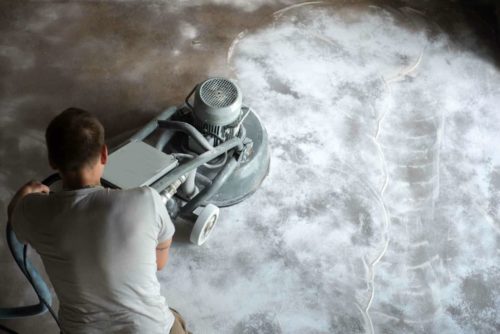Polyurea and polyurethane are ideal for manufacturing protective linings and coatings. The two materials share many similarities and can often be used interchangeably. However, there are several distinct differences that should be considered when choosing between the polymer compounds. From chemical composition to curing time, these differences lend unique advantages and disadvantages depending on the intended application.
Polyurea vs Polyurethane
 Polyurethane and polyurea share many similarities — one of the biggest being that, in their final forms, they are capable of curing into very flexible to very stiff coatings. Polyurethane has been a standard sealant and adhesive material for decades. It is created from a reaction between a polyol and an isocyanate, creating a waterproof coating with high resistance to certain acids. This makes polyurethane ideal for use in the food industry, where frequent contact with food-related acids is expected.
Polyurethane and polyurea share many similarities — one of the biggest being that, in their final forms, they are capable of curing into very flexible to very stiff coatings. Polyurethane has been a standard sealant and adhesive material for decades. It is created from a reaction between a polyol and an isocyanate, creating a waterproof coating with high resistance to certain acids. This makes polyurethane ideal for use in the food industry, where frequent contact with food-related acids is expected.
Polyureas are a more modern addition to the sealant and coating industry. They are formed when multifunctional amine reacts with an isocyanate. The compound reacts faster than polyurethane, creating a gel in only seconds after mixing the ingredients.
Advantages and Disadvantages of Polyurea vs Polyurethane
The unique compositions of the two substances provide them with advantages and disadvantages based on the application. Both compounds are ideal protective coatings for concrete, reducing the damaging effects of chemical exposure, corrosion, abrasion, and moisture. Polyurethanes offer the following advantages:
- Facilitates application in two parts for more versatility
- Less expensive than polyurea
- Resistant to damaging UV rays
- Curing time can be set from one minute to several hours depending on the mixture
Polyurethanes also have unique disadvantages compared to polyurea coatings. When applying polyurethane, users must pay attention to the temperature and humidity level. The chemical reaction is sensitive to temperatures less than 32°F. Polyurethane coatings may blister when applied at humidity levels higher than 70%.
Polyurea offers the following advantages:
- Pleasant appearance with various pigment options
- Easy to work with
- Applicable at temperatures as low as -20°F
- Performs well in humid environments
- Quick curing time allows for application in harsh conditions
- Withstands extreme environments
Several factors put polyurea at a disadvantage compared to polyurethane. Polyurea can be expensive to apply because technicians must be highly trained to work with the incredibly fast-curing compound before it sets. With little resistance to UV damage, the appearance of polyurea can become chalky, discolored, and dull when exposed to UV rays.
Applications of Polyurea vs Polyurethane
Polyurea and polyurethane’s unique characteristics make them ideal for use in differing applications. Polyurea’s resistance to harsh environments makes it ideal for construction applications. It is suitable for bridges, car parks, decks, roof repairs, and aesthetically appealing surface coatings for floors. The oil, coatings, marine, and other industrial industries depend on polyurea for a wide range of uses.
Polyurethane’s low cost and manageable application make it suitable for cars, furniture, housing, and shoes. It can also be used in manufacturing hard protective coatings and foam insulation for mattresses.
Polyurea vs. Polyurethane Coatings From Copps Industries
Polyurea and polyurethane are valuable coating and lining compounds for many industries. While polyurethane coatings are affordable and offer UV resistance, they are more susceptible to damage in humid or freezing environments. Polyurea resists extreme conditions and cures incredibly fast but can be more expensive.
Copps Industries has over 40 years of experience in the epoxy business and maintains an ISO 9001-2015 certification to deliver the highest quality products and services. We focus on providing industry-leading customer service and high-quality products. We offer a wide range of products to suit numerous applications. At Copps Industries, we formulate each of our systems in the USA. We are building the future of green epoxies by developing environmentally friendly solutions.
Contact us to speak with our experts about our capabilities and custom solutions for your application or request a quote today.



 Request Quote
Request Quote 